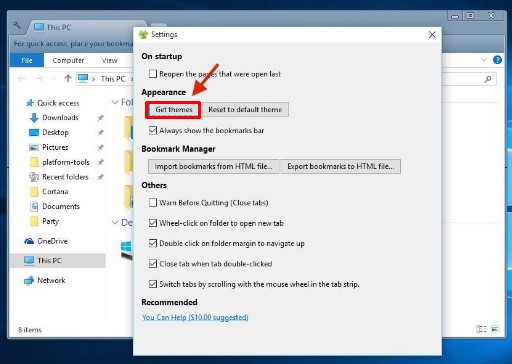

- #Windows monitor folder for new files how to
- #Windows monitor folder for new files install
- #Windows monitor folder for new files software
- #Windows monitor folder for new files code
Ok, Vim has created my file (dave.txt) and my program has detected it! Well done! But why the second line? Well, if the current directory has a new file we can say that it’s changed as well, can’t we? swp file and that’s what our program has detected, printing the first line. Wow, it works! When you try to create a file with Vim it start by creating a. For example, I have started vim (my favourite editor) to create a file: $ vim dave.txtīy the time vim started, in my running console some statement has been printed: hey. Now open a different terminal, move under the directory of your program and try to do something. Start the program from a terminal and you will see your cursor just hang. Testing our new shiny watchdogĪnd now it’s showtime guys, let’s test our watchdog! Ok, if everything is correct the result should be the one you can see below.

I think this snippet doesn’t need any comments, does it? We are just starting the observer thread to get all the events. So, let’s start creating four different functions that will be used when a file is modified, created, deleted or moved.

#Windows monitor folder for new files code
Now that we have created the handler we need to write the code we want to run when the events are raised. The “patterns” variable contains the file patterns we want to handle (in my scenario, I will handle all the files), the “ignore_patterns” variable contains the patterns that we don’t want to handle, the “ignore_directories” is just a boolean that we can set to True if we want to be notified just for regular files (not for directories) and the “case_sensitive” variable is just another boolean that, if set to “True”, made the patterns we previously introduced “case sensitive” (that’s normally a good idea, unless you are working with stupid case-insensitive-file-systems… yeah, I’m talking about you Windows! :P ). In my example I have used some variables just to made the configuration of the event handler a little bit easier to be undestood. Import some stuffģ ignore_patterns = None 4 ignore_directories = False 5 case_sensitive = True 6 my_event_handler = PatternMatchingEventHandler(patterns, ignore_patterns, ignore_directories, case_sensitive) Ok, let’s start and pretend that we want to create a program that logs all the file that are created or modified in the same directory of our program. I mean, we still need to code the program that will actually use this module, but trust me, that will be really easy!
#Windows monitor folder for new files install
Now, create your virtual environment (optional but raccomended… at least by me), activate it and install the package watchdog with the following command: pip install watchdogĭone, we have almost finished, haven’t we? If you want to find out more about virtual environments (that’s probabilly because you haven’t read all my previous post, so shame on you!), just have a look at this article. As always, I raccomand to use virtual environments instead of installing packages system wide. To code this program we will need an additional module called “watchdog” (wow, who could have guessed it?) written by Yesudeep Mangalapilly, so let’s start by installing it. So, today we will code a watchdog in Python. Your program could set a watchdog to monitor that file and if the configuration file is modified you could think to reload it and apply the new configuration at runtime, without the need of restarting your program. When a change occurs, the watchdog report it to us raising a specific event that we can handle.įor example, let’s suppose you have developed a program that use a configuration file.
#Windows monitor folder for new files software
But what is a “watchdog”?Ī watchdog is a little piece of software that monitors our filesystem looking for any changes (like the creation, change or deletion of a file or of a directory).
#Windows monitor folder for new files how to
Hey guys, today’s post is about how to create a watchdog in Python.


 0 kommentar(er)
0 kommentar(er)
